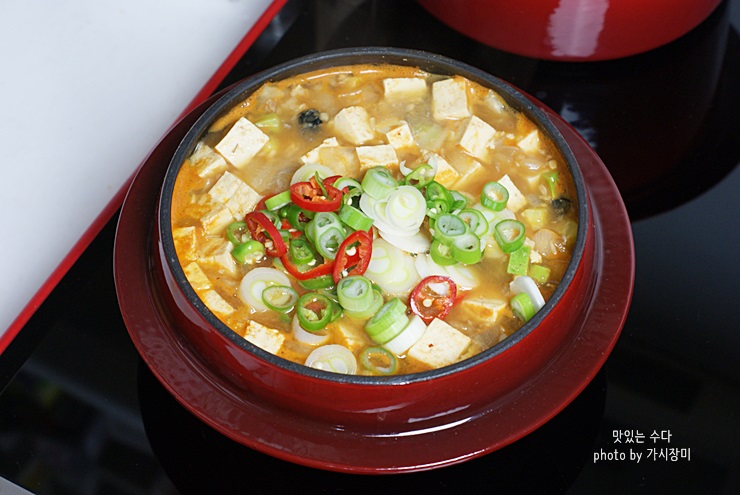Savory Soybean Paste Stew with Chewy River Snails
Boost Your Appetite! A Hearty and Delicious River Snail Doenjang Jjigae Recipe

After a busy week filled with business trips, I prepared this hearty river snail doenjang jjigae for my family the night before. They enjoyed a satisfying breakfast with it, filling my quiet Saturday morning with their happy reviews. The chewy texture of the river snails combined with the rich, savory soybean paste is truly magical, making you want to finish a whole bowl of rice! Try this recipe and create a nutritious and beloved stew for your family.
Stew Ingredients- 100g Cooked River Snails, cleaned
- 1.5 Tbsp Doenjang (Korean Soybean Paste)
- 0.5 Tbsp Spicy Gochujang (Korean Red Pepper Paste)
- 1 handful Radish (approx. 1/4 medium)
- 1/2 small Onion
- 1/4 Zucchini
- 1/2 block Firm Tofu
- 1 Red Chili
- 1 Green Chili (e.g., Cheongyang)
- 1/2 Green Onion
- 1 tsp Minced Garlic
- 3 cups Anchovy-Kelp Broth
Cooking Instructions
Step 1
Begin by thoroughly washing all the vegetables and patting them dry. Chop them into bite-sized pieces suitable for stew. Slice the radish thinly, the onion and zucchini into half-moons, and the tofu into 1.5cm cubes. Thinly slice the red and green chilies diagonally, removing the seeds if desired. Finally, finely chop the green onion.
To prepare the river snails: In a bowl, combine the cleaned river snails with 1 tablespoon of flour and 1 teaspoon of coarse sea salt. Gently rub them together. This process helps to remove any sliminess or impurities. Rinse the snails thoroughly under cold running water until the water runs clear. Drain them well. This step ensures a clean flavor and a pleasant chewy texture without any fishy odor.

Step 2
To create the rich base of the stew, pour the anchovy-kelp broth into a ttukbaegi (earthenware pot) or a regular pot. Add the sliced radish and bring it to a boil over medium-high heat. Once the radish starts to turn translucent, carefully dissolve the doenjang through a sieve into the broth. Stir well to ensure the doenjang is fully incorporated and there are no lumps. This ensures a smooth and even flavor distribution.

Step 3
Now, let’s add a touch of spiciness to complement the savory doenjang. Stir in the spicy gochujang into the broth. Mix it thoroughly until it’s well combined with the doenjang. The gochujang not only adds a pleasant heat but also enhances the stew’s vibrant color.

Step 4
It’s time to add the star ingredient: the prepared river snails. Carefully add the cleaned river snails to the pot. Bring the stew back to a rolling boil over high heat and let the snails cook. This allows their unique texture and flavor to meld beautifully with the broth.

Step 5
Check if the radish is tender. Once it is, add the remaining vegetables: the sliced onion, tofu, and zucchini. Continue to simmer the stew. It’s important to add the onion and zucchini after the radish is partially cooked so they retain a pleasant, slightly firm texture. Handle the tofu gently to prevent it from breaking apart too much.

Step 6
The stew should be bubbling deliciously now! As the jjigae simmers, foam may rise to the surface. Skim off this foam periodically with a spoon. Removing the foam results in a clearer broth and a cleaner, more refined taste.

Step 7
The stew is almost ready! Finally, add the chopped green onion, red chili, and green chili for a burst of fresh aroma and a touch of spice. Let it simmer for another minute or two for the flavors to meld together. Adding the aromatics at the very end preserves their fresh fragrance. Serve this delicious river snail doenjang jjigae hot with a bowl of steamed rice. Enjoy your home-cooked meal!




